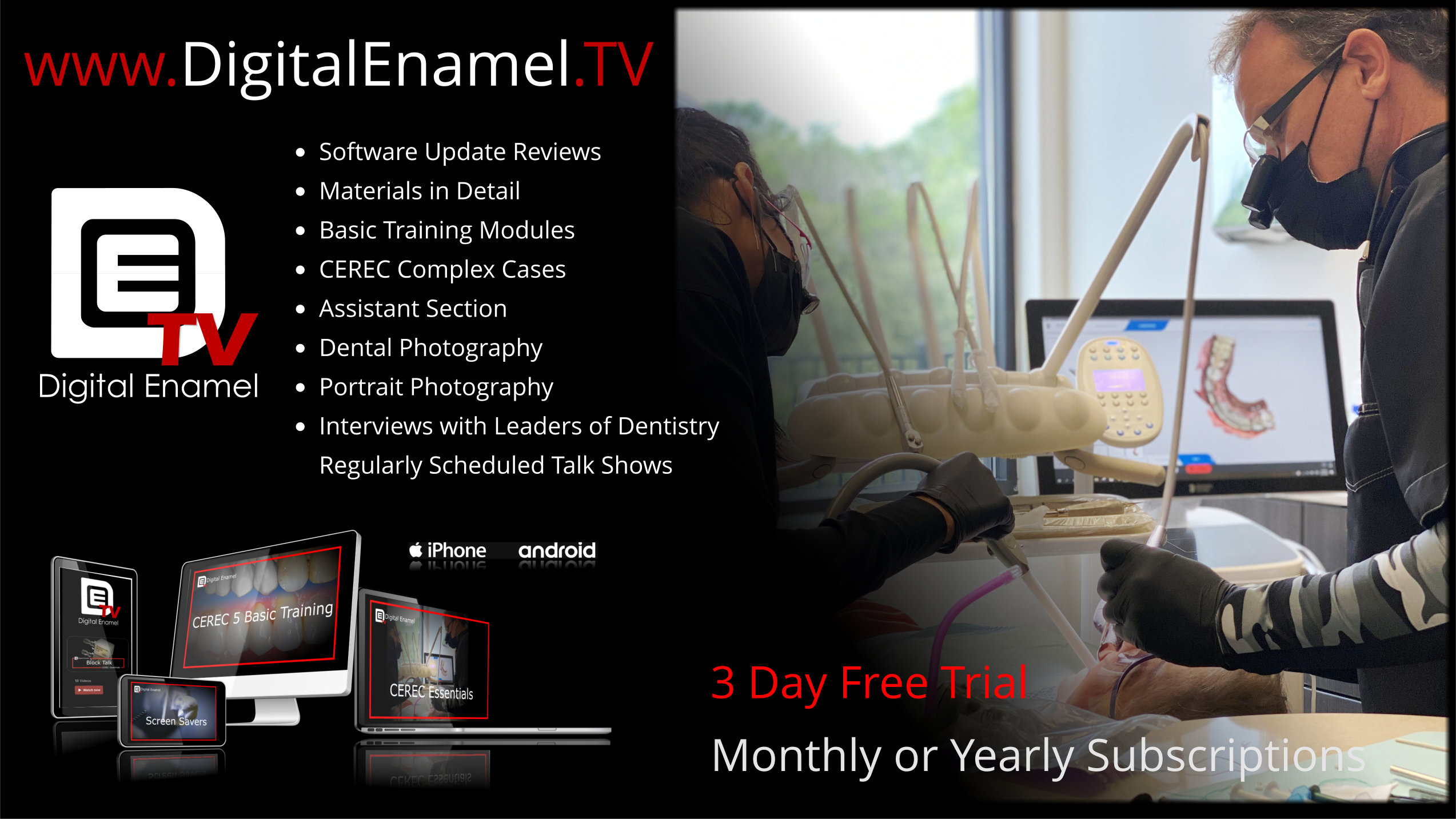
This is a bit of a long case, but I think it really shows how well my three favorite technologies work together: CEREC, Galielos, and the new Emax abutment blocks. This patient fractured #9, tried in a medium Reference Body and extracted the root.

Fabricated a CEREC Guide and got busy. Note that the lance bur which is my first when I do any immediate has a shank with a 2.8mm diameter not a 2.3, so start with the 2.8 key. Note the position of the pilot and the position planned!

Used a 4.7 by 13mm Legacy 3. The keys I make for CEREC Guide go up to a 4.4 drill which is the last for the 4.7 in D2 bone. Note the palatal position and angulation of the implant.

Used a stock zirconia abutment and milled out a CEREC “Temp” of of an Empress CAD Multi A1 block. When doing immediates I usually either mill the temp in CEREC or get a milled or processed acrylic temp from a lab. Cemented with Multi Link.

6 months later the implant is ready to restore. In this case we just accessed the abutment screw hole and turned this abutment/crown in to a screw retained temp.

Placed the scan post, I like to take a film to both verify seating and to check integration. Note the papillae and the inter proximal bone height.

Placed the grey scan cap on the post. Really look at it and make sure that it lines up with the post. Its pretty easy to have it off and then its sort of game over when it comes time to seat the restoration.

Used smile design to just give me a little assurance that the patient’s lip line would not show any flaws in my final restoration. Relatively low lip line.

There are lots to love about the Emax abutment block, but if I could voice two small gripes. First is a software issue. If you index the scan post to the buccal, like you should, the sprue is always 90 degrees to that, meaning you get a sprue in the inter proximal. To counteract that you need to index the scan post to the inter proximal, which makes it tough to visualize. Second, and there is no way around this, the screw hole, even though you place your implant in the cingulum, may slightly “draw” with your incisal edge. The only way around that is to stack a little porcelain.

Those 16 blocks take a while to mill! Tried in the mouth, note the hole in the incisal edge. I like to place the ti-base into the Emax framework and try it as one unit. If the gingival hold you up, you make need to contour with a laser. Took a physical impression for the lab cut back.

Back from the lab with incisal added. Nice tissue. The gingival crest is a little lower than 8, but the patient has a low lip line so no worries.

Torqued down progressively (15, 20, 25, 30 Ncm waiting about 30 seconds to a minute between “clicks”. Endo sponge and opaque flowable in access.

Final, we should get some papilla growth on the mesial. Is it perfect? No, but certainly a better option than crown lengthening or even orthodontic extrusion. I love having this technology at my disposal!

